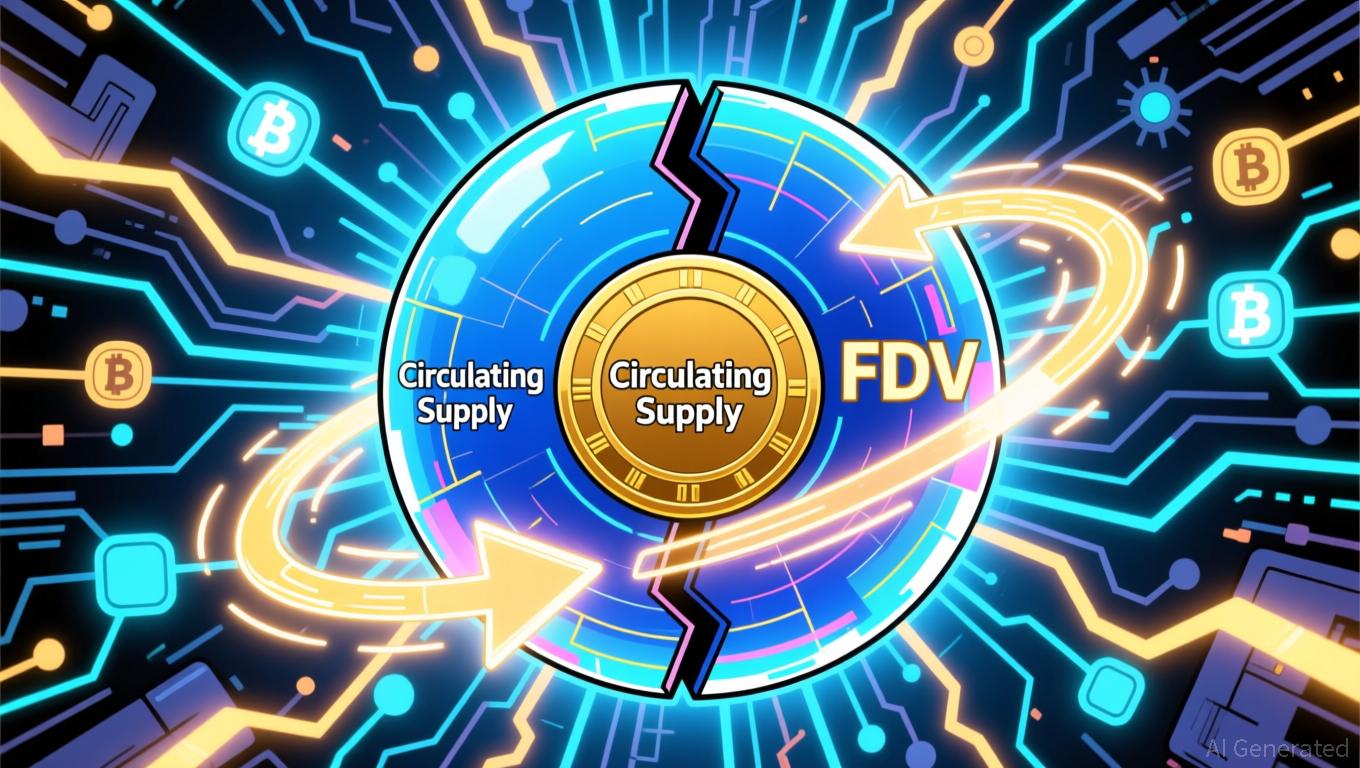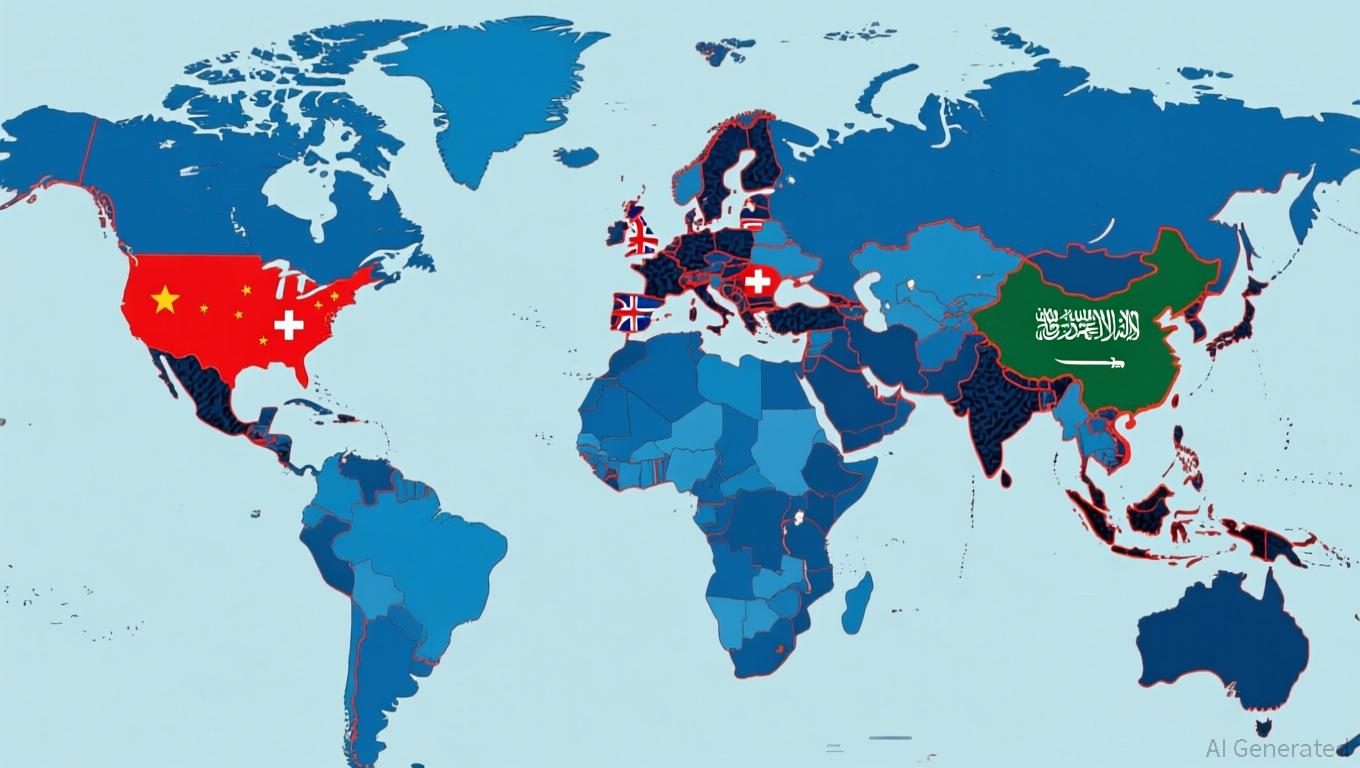Monero’s reputation for privacy faces challenges from modular competitors and evolving regulations
- Monero (XMR) nears $400 as privacy-focused crypto gains traction amid evolving market demands for modular solutions. - Emerging rivals like Solana's GhostwareOS and Zcash challenge Monero's dominance with interoperable privacy features. - Regulatory pressures, including South Korea's expanded AML rules, heighten scrutiny on privacy coins despite their anti-surveillance design. - Analysts highlight Monero's "extreme privacy" legacy but note growing adoption of integrated privacy tools in active blockchain
Monero's Upward Momentum and the Changing Privacy Crypto Landscape
Monero (XMR) has continued its recent upward trend, with bullish investors setting their sights on a possible new yearly high. As the privacy-centric cryptocurrency trades in the $380 to $390 range, its market capitalization stands at roughly $6.9 to $7.0 billion, based on Binance figures.

Experts in technical analysis highlight Monero’s enduring reputation as a leader in privacy, thanks to features like ring signatures and stealth addresses. However, the broader crypto sector is increasingly gravitating toward modular privacy tools that can be integrated into various blockchain platforms.
Innovation and Competition in Privacy Coins
The resurgence of interest in privacy coins is fueled by both technological progress and shifting regulatory frameworks. While Monero’s robust anonymity remains a key advantage, it now faces competition from emerging projects such as GhostwareOS on Solana, which introduces privacy layers compatible with DeFi and NFT applications.
Meanwhile, Zcash (ZEC) has established itself as a top contender in 2025, trading close to $500 and serving as a cornerstone for on-chain privacy. Ghost, another privacy-oriented project, is gaining momentum with its GhostPay service, which anonymizes transactions and redistributes fees to token holders, even though its market cap is comparatively modest.
Market Trends and Institutional Interest
The overall cryptocurrency market has shown signs of stabilization. Notably, XRP experienced a 7% jump following the introduction of regulated ETFs, signaling a rise in institutional participation. Despite these developments, Monero’s path is shaped by its distinct position within the privacy sector. Analysts point out that while Monero remains the “gold standard” for default privacy, its significance is now complemented by privacy solutions that are seamlessly woven into broader blockchain ecosystems. This evolution reflects a maturing market that values both privacy and interoperability.
Regulatory Developments and Their Impact
Regulatory scrutiny continues to intensify around privacy-focused assets. For example, South Korea has recently broadened its anti-money laundering (AML) regulations to include crypto transfers below $680, increasing oversight of privacy coins. These measures are designed to close gaps that could be exploited for illegal activities such as drug trafficking and tax evasion. Although Monero’s technology is inherently resistant to such controls, the evolving regulatory landscape may influence investor confidence and adoption strategies.
Outlook for Monero
Looking forward, Monero’s ability to sustain its price rally will hinge on how well it balances its core privacy features with the changing needs of the market. Technical signals, such as resistance points and trading volume, indicate the possibility of a breakout if institutional interest remains strong. Nevertheless, larger economic factors—including interest rate trends and geopolitical events—will also have a significant impact on Monero’s future performance.
Disclaimer: The content of this article solely reflects the author's opinion and does not represent the platform in any capacity. This article is not intended to serve as a reference for making investment decisions.
You may also like
As Crypto Markets Fluctuate, BI DeFi's Eco-Friendly Cloud Approach Draws Growing Attention from Institutions
- BI DeFi launches a blockchain-powered cloud computing platform combining renewable energy and advanced security to stabilize crypto market risks. - XRP's $180M inflow highlights growing institutional interest in digital assets despite broader market volatility and billions in sector outflows. - The platform's green energy data centers and automated yield settlements address ESG priorities while reducing blockchain's carbon footprint. - User-friendly features like $17 introductory contracts and $50K affil

FDV's Dilemma: Assessing Opportunity While Concealing Risk
- FDV (Fully Diluted Valuation) has become a 2025 key metric for evaluating crypto projects' long-term risks and scalability, especially for new layer-1 blockchains like Monad and Apertum. - Monad's $3.9B FDV despite 12% unlocked supply highlights "low float, high FDV" dynamics, while Apertum's 1.05x FDV-to-market cap ratio signals minimal dilution risk. - Critics note FDV's limitations, including price volatility assumptions and irrelevance for uncapped supply projects like Ethereum , requiring contextual

Switzerland Delays Crypto Information Exchange Pending International Coordination
- Switzerland delays crypto tax data sharing with foreign nations until 2027, citing unresolved CARF partner agreements. - The OECD's 2022 framework requires member states to exchange crypto account details, but 75 countries including the EU and UK face implementation challenges. - Transitional measures ease compliance burdens for Swiss crypto firms while awaiting finalized international data-sharing protocols. - Major economies like the U.S., China, and Saudi Arabia remain outside CARF due to non-complian

Bitcoin Updates: SGX Addresses Offshore Perp Shortfall as Bitcoin Decline Increases Demand for Hedging
- SGX launched Bitcoin and Ethereum perpetual futures, becoming a first-mover in regulated onshore crypto derivatives to meet institutional demand. - The $187B/year perp market, dominated by Asia, now gains a regulated alternative to offshore platforms with SGX's 22.5-hour trading window. - Perps enable hedging during Bitcoin's 2025 downturn, with SGX's margin-call system prioritizing investor protection over instant liquidations. - Regulatory caution limits access to accredited investors, aligning with gl
